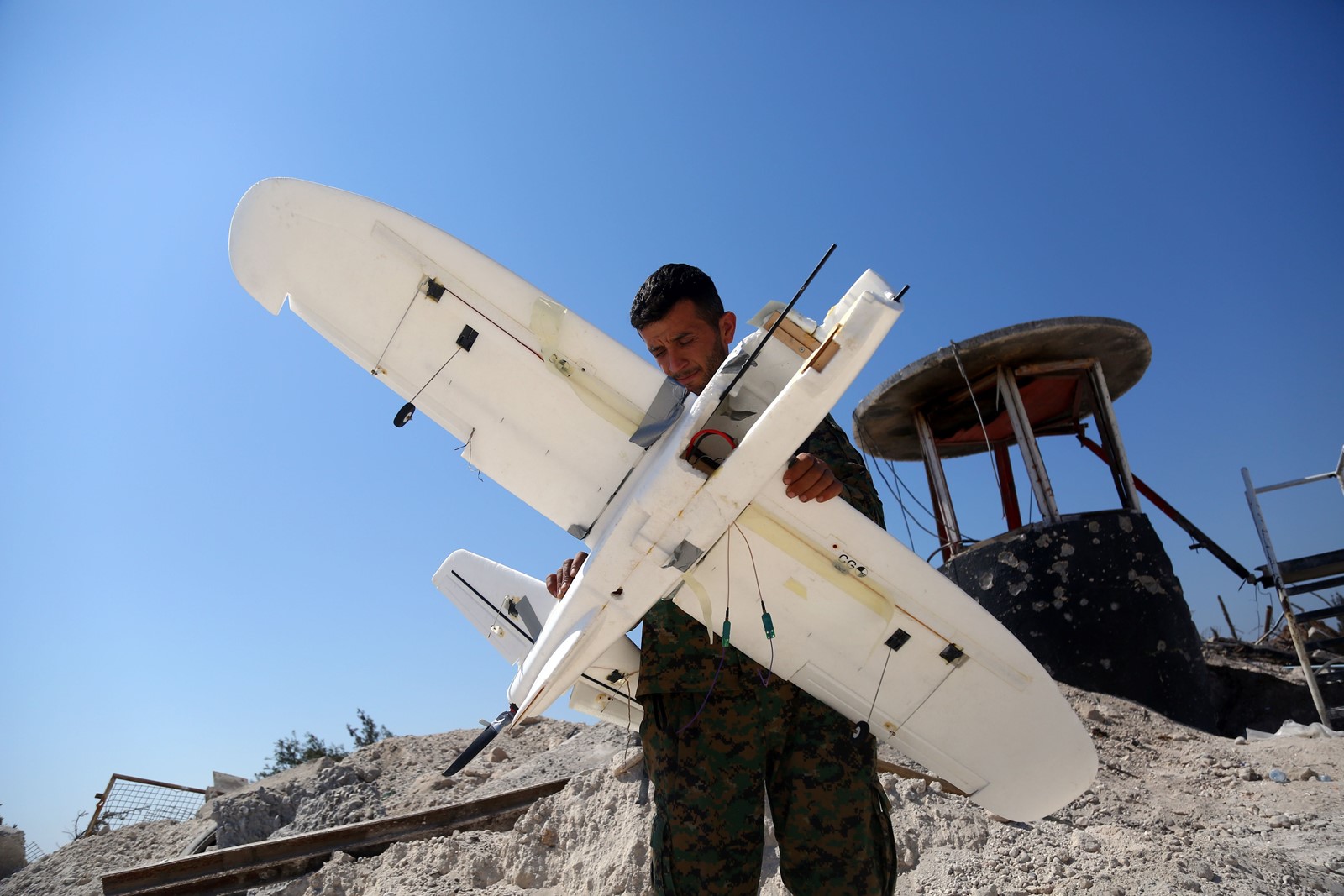As ISIS drones die, dangers live
Some see availability, sophistication of commercial pilotless devices as threat in U.S.

A specially trained unit of Islamic State pilots flew small quadcopters and model-plane-sized drones, sometimes a dozen or more at a time, to stream live video of U.S.-backed ground forces and to drop crude munitions on them in both Iraq and Syria.
By evading ground defenses with remote-controlled devices bought on the internet, the militants pioneered an asymmetric but successful tactic on the battlefield, much as the growing U.S. fleet of missile-firing Predator and Reaper drones has changed modern warfare.
In the battle for the Iraqi city of Mosul, which government forces recaptured in July, dozens of Iraqi troops were killed or wounded by 40-millimeter grenades and light explosives dropped from buzzing overhead devices so numerous that one U.S. commander likened them to killer bees.
It was, U.S. officials later acknowledged, perhaps the first time since the Vietnam War when the American military was powerless against enemy aircraft — in this case aircraft only a tiny fraction the size of U.S. warplanes.
Until now, small drones mostly sparked security alerts in America by flying near the White House, near airports and in other restricted zones.
But the availability and sophistication of commercial drones now are seen as a threat to the United States, some experts argue.
“We do know that terrorist organizations have an interest in using drones,” newly confirmed FBI Director Christopher Wray told a Senate hearing last week. “We have seen that overseas already with some frequency. I think that the expectation is that it is coming here, imminently.”
Nicholas Rasmussen, the director of the National Counterterrorism Center, told the same panel that his agency has been coordinating with law enforcement and aviation regulators to study ways to defend against small drones used in terrorist attacks.
“Two years ago, this was not a problem,” he told the Senate Committee on Homeland Security and Governmental Affairs. “A year ago this was an emerging problem. Now it’s a real problem.”
Islamic State affiliates in the Philippines, Libya and Yemen already have used drones for surveillance. So have the al-Qaida affiliate in Syria, Hezbollah in Lebanon and the Taliban in Afghanistan.
The threat spurred the Army to issue a handbook in April to urge commanders to assign dedicated observers to track small drones and to train soldiers in what it called “Counter-Unmanned Aircraft System Techniques.”
Gen. Raymond Thomas, head of Special Operations Command, said small drones were the “most daunting” threat his commandos faced in Iraq and Syria last year.
He recalled once during the battle for Mosul when the Iraqi forces’ “effort nearly came to a screeching halt” because the sky was filled with buzzing robotic aircraft.
“At one point there were 12 killer bees, if you will, right overhead,” he said during a conference in Tampa, Fla., in May.
The Pentagon has rushed electronic jammers and other specialized equipment to help Iraqi security forces shoot down or neutralize Islamic State drones.
The Pentagon has also launched multimillion-dollar programs to improve defenses, including lasers that can disable a drone in the air and guns that fire small nets to nab them mid-flight.
Few of the gee-whiz measures have produced tactical success on the battlefield. Iraqis and U.S.-backed Syrian forces instead have tried to shoot them down with automatic weapons, with mixed success.
With few remedies, the U.S. has chiefly relied on targeted airstrikes. In some cases, crews used GPS data recovered from the targeting systems of downed drones that showed where they were launched, according to U.S. officials not authorized to speak publicly on intelligence matters.
Over the last two months, U.S. warplanes have destroyed several Islamic State drone depots, machine workshops and pilot schools, the officials said.
The airstrikes also killed eight commanders said to be responsible for obtaining, arming and distributing the drones down smuggling routes between Iraq and Syria.
Col. Ryan Dillon, the Baghdad-based spokesman for the campaign against Islamic State, said the U.S. sought to remove the militants’ “tactical ability to get their systems airborne.”
“We achieved the greatest effect against their program by simply killing the people that have weaponized it,” he said.
There are clear signs of success. U.S.-backed fighters have reported seeing seven small drones last month in Iraq and Syria, according to the U.S. military task force in Baghdad.
That’s down from more than 60 drone sightings earlier this year, especially during battle for Mosul.
Islamic State had a separate division to purchase the drones from commercial websites and other sources in China, India and Turkey, according to U.S. officials.
Engineers in Islamic State upgraded the power systems. so the devices could fly longer and drop crude munitions on opposing forces.


 PREVIOUS ARTICLE
PREVIOUS ARTICLE
